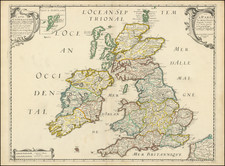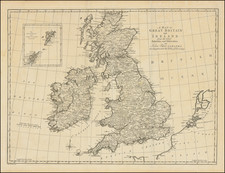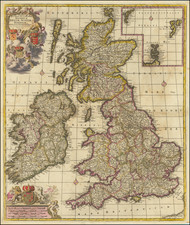Large finely preserved letter of Marque, hand written on vellum, authorizing the British ship Alarm To Take Prizes on the High Seas
The HMS Alarm, transitioning from a Royal Navy warship to a privateer in 1798, embarked on a remarkable journey during the French Revolutionary Wars. Under the command of Captain Francis Giffard, with lieutenants Philip Giffard and Peter Le Cocq, this ship's privateering activities significantly impacted maritime conflict and commerce interception of the era.
During this time, privateering was a widely accepted practice, sanctioned by governments to augment naval strength and disrupt enemy supply lines. The Alarm capitalized on this, leveraging its naval prowess to prey on enemy and rival merchant ships. The ship's shift from naval service to privateering was reflective of the broader strategic adjustments made during prolonged periods of war, particularly in response to the resource-intensive nature of naval battles.
Captain Francis Giffard, an experienced naval officer, brought a combination of tactical knowledge and bold leadership to the Alarm. His lieutenants, Philip Giffard and Peter Le Cocq, were key in executing their strategy, contributing to the ship's success in capturing and commandeering enemy vessels.
The Alarm's record includes several notable captures. In collaboration with the Guernsey privateer Marquis of Townsend, it captured the Portuguese ships Adjutor Dahl and Convenienta during their journey from St. Andero to Lisbon, subsequently bringing them to Guernsey. Furthermore, the Alarm, along with Dispatch and Marquis of Townsend, recaptured the British ship St. James Planter from the French privateer Bellone and also reclaimed the British vessel Nancy from French control.
A significant achievement was in November 1799, when the Alarm, together with HMS Amphion, captured the Spanish letter of marquee Astuzzana. The Astuzzana, heavily armed and escorting a convoy from Cadiz to Vera Cruz, was a valuable prize, which the Alarm brought to Port Royal, Jamaica, on December 23, 1799.
The Alarm's active career as a privateer concluded in 1801 after it sustained severe damage in a confrontation with a French naval squadron. The vessel was later decommissioned and sold, marking the end of its historical journey. Through its exploits as a privateer, the HMS Alarm not only contributed to the British naval efforts during a critical period but also became a noteworthy example of the role privateering played in maritime warfare of the late 18th century.
The Officers named in the Letter of Marque include:
- Francis Giffard - Captain
- Philip Giffard - Lieutenant
- Peter Le Cocq - Lieutenant
- John Bienvenu - Lieutenant
- Richard Jolly - Sailing Master
- Peter Snell - Prise Master
- James Jones - Prise Master
- Phillip Warn - Boatswain
- John Clark - Boatswain Master
- William Will - Gunner
- James Saule - Gunner Mate
- William Beaker - Quartermaster
- John Vian - Quartermaster
- James Allen - Steward
- Francis Johns - Cooper
- James Betty - Prize Master Mate
- Willaim Cook - Prize Master Mate
- A. Browns - Prize Master.












![[ Indian Cave and Rock Paintings ] World Primitive Rock Art -- The Conquest of Indian America](https://storage.googleapis.com/raremaps/img/small/93916.jpg)

![[Grateful Dead Tour Poster] The Original Grateful Dead Wall Map & Tour Guide Volume 1 / The Golden Road To Unlimited Devotion](https://storage.googleapis.com/raremaps/img/small/85630.jpg)

